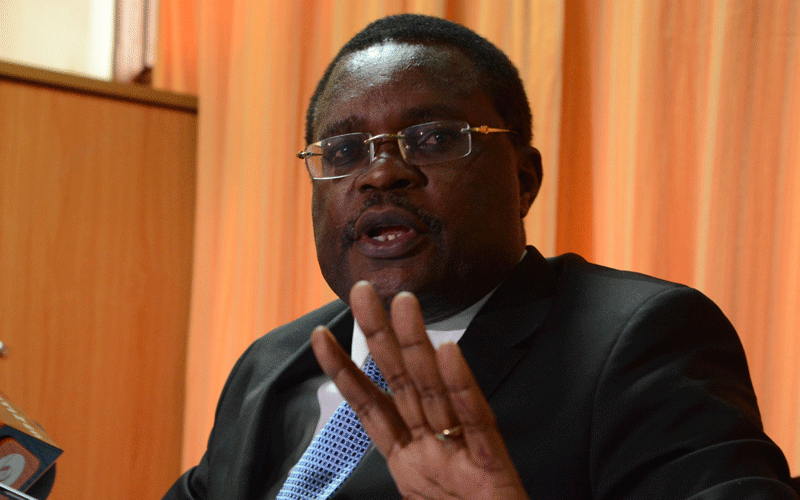Deadlock over counties cash sharing
By Hillary Mageka, July 1, 2020County governments are likely to be thrown into a cash crisis after senators yesterday failed to pass a new formula for sharing revenue among the 47 devolved units.
The Senate Committee on Finance and Budget was scheduled to table its report on an amended version of the proposal by the Commission on Revenue Allocation (CRA).
However, after a long wait, Senate Speaker Kenneth Lusaka announced the report could not be adopted in its current form.
The decision was ostensibly to prevent a looming clash between senators whose counties were set to gain more money against those whose regions are expected to lose.
Under the new formula, counties with high populations such as Nairobi and Kiambu are set to be allocated more funds against those with lower populatione such as Lamu, Marsabit and Mandera.
Near fist-fights
Lusaka announced that senators will have an informal meeting (Kamukunji) to discuss the matter.
“I am, therefore, giving directions that we have a Kamukunji on Monday so that we are taken through the report to enable us to build enough consensus,” Lusaka said as he adjourned the House until July 7.
“After the Kamukunji, it is when I will give further directions on when we will meet to have the report tabled and discussed,” he added.
During their day-long deliberations, the committee sessions were punctuated with drama, near fistfights and shouting matches leading to a deadlock that spiralled onto the floor of the House.
Had Senate passed it, the proposed formula would have guided the sharing of revenue among county governments for the next three financial years, starting from 2020/21 to 2023/24.
Without the third basis formula, the Sh316.5 billion allocated in the equitable shareable revenue in the Division of Revenue Allocation Bill (DORA) cannot be disbursed starting today, as it will be unconstitutional.
The new cash sharing method was developed by the Commission on Revenue Allocation (CRA) after the expiry of the second basis formula and presented to the Senate in April, 2019.
The Constitution provides that it must be approved before the County Allocation of Revenue Bill 2020 is considered.
Failing to pass the proposal could ground services in some counties which might be unable to pay June salaries and other statutory deductions this week.
High population
Besides population, basic equal share, poverty, land area, development, personnel emolument and fiscal responsibility, the new formula places particular emphasis on county functions.
Under the arrangement, at least 29 counties gain more revenue while 18 lose at least Sh1 billion each.
In the proposal the parameters of population and basic revenue share has each been allocated 20 per cent, agriculture (16 per cent), poverty (14 per cent), access to roads (seven per cent), land mass (five per cent) and revenue effort (collections) and fiscal prudence one per cent.
However, opinion is sharply divided among politicians, with those from counties with high populations throwing their weight behind it.
On the other hand, representatives from counties with large landmass, but sparse population have vehemently opposed the formula. They argue that, if adopted, their regions will lose up to Sh17 billion cumulatively.
Kirinyaga Senator Charles Kibiru, who chairs the Senate Finance committee, said yesterday they were not “seriously ready” to present the report to the House as it had pending issues.
“We will table our report next week after the National Treasury has considered our proposal to add some money to cushion the 18 counties which are losing,” Kibiru said last evening.
However, Makueni Senator Mutula Kilonzo Junior, a member of the committee, warned that there could be a “near blood shading” were the report to be tabled in the Senate in its current form.
“It was going to be fire. It is a technical withdrawal of the report. The troops especially from ASAL areas had mobilised like nobody’s business,” Kilonzo Jr, who is also the Minority Whip, said.
“The committee must go back to the drawing board and give a report all of us will agree with,” he added.
Among the biggest losers in the new lineup is Wajir County whose allocation will be cut by Sh2 billion.
Others are Marsabit and Mandera which will see their revenues drop by Sh1.9 billion each. Others will be Garissa (Sh1.6 billion), Tana River (Sh1.5 billion), Mombasa ,(Sh1.6 billion), Kwale (Sh1 billion) Narok (Sh981 million) and Isiolo (Sh869 million).
New formula
Other counties that could see their revenues reduced are Kilifi (Sh859 million), Turkana (Sh547 million), Kitui (Sh432 million), Makueni (Sh423 million), Samburu (Sh403 million), Taita Taveta (Sh399 million), Tharaka Nithi (Sh338 million), and Vihiga (Sh239 million).
Among the highest gainers will be Nandi County, which will receive an additional Sh1.3 billion of the shareable revenue.
Its neighbour Uashi Gishu and Nakuru counties would have their allocation increased by Sh1.1 billion each.
The populous counties of Kiambu and Kakamega have been allocated Sh1 billion more each in the new formula.
Trans-Nzoia County will get Sh994 million more, Bungoma (Sh926 million), Kirinyaga (Sh762 million), Bomet (Sh730 million), West Pokot (Sh692 million), Baringo (Sh663 million) and Siaya (Sh586 Million).
Migori will be allocated Sh574 million more, Kericho (Sh556 million) Busia (Sh559 million), Machakos (Sh 551 million), Laikipia (Sh 523 million) and Embu an additional Sh504 million.
